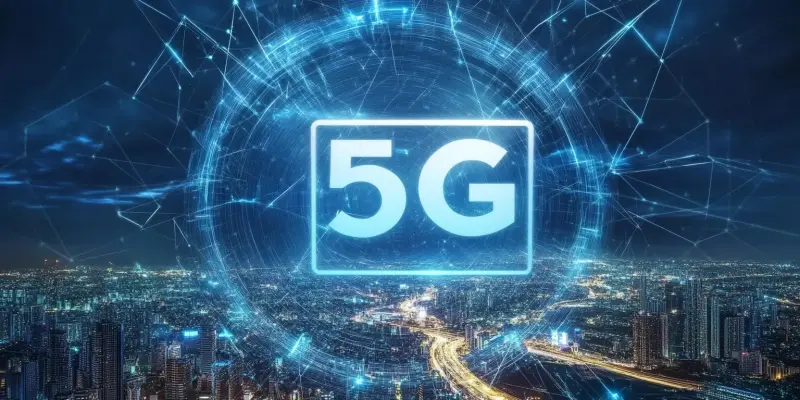The world is currently witnessing the dramatic rollout of 5G technology, characterized by blazing fast data speeds and significantly lower latency than its predecessors. While this technology promises a revolution in connectivity and service delivery across various industries, it also opens up new and more profound security challenges.
Current State of the 5G Industry
Promises and Potential
The introduction of 5G has revolutionized our approach to connectivity by promising unprecedented data transfer rates and ultra-low latency. These benefits are transforming sectors like autonomous vehicles, remote surgeries, and smart cities, which can now operate with greater efficiency and capability. This unprecedented connectivity potential allows 5G to support up to one million devices per square kilometer, a factor crucial for the advancement of IoT.
However, as this connectivity expands, so does the need for robust security measures. The rapid proliferation of IoT devices, each representing a potential vulnerability, underlines the necessity of advanced security frameworks to protect these networks.
Emerging Cybersecurity Risks
The very attributes that make 5G appealing also raise the stakes for cybersecurity. The ability to transfer data quickly and with minimal delay offers an inviting target for cybercriminals. High-speed threats can utilize 5G’s capabilities to launch rapid, high-volume attacks that traditional defenses are often ill-equipped to handle. These attacks can cause significant disruptions, particularly because 5G’s complex, decentralized architecture increases the number of potential entry points for malicious actors.
Analysis and Trends
Rising Threats in a High-Speed World
With data speeds and latency thresholds far exceeding those of previous generations, 5G poses unique security risks. Cybercriminals can exploit the quicker data transfer rates to execute large-scale attacks, such as Distributed Denial of Service (DDoS), with greater efficiency. These attacks can overwhelm network defenses more effectively, disrupting services to an unprecedented degree.
Additionally, the architecture of 5G, which is heavily reliant on software-defined networking and edge computing, introduces new vulnerabilities. The reliance on decentralized, smaller-scale infrastructures can lead to security challenges. These aspects make it increasingly difficult to monitor and secure networks as they become more fragmented.
Evolving Attack Surfaces with IoT
The integration of IoT devices into 5G networks adds another layer of complexity to the security landscape. The sheer number of connected devices, many of which have minimal built-in security, significantly expands the attack surface for potential breaches. A compromised device within this ecosystem can act as an entry point for broader attacks or be hijacked into botnets for DDoS operations.
The risks are not limited to connectivity disruptions; there’s a significant threat to sensitive data as well. Connected IoT devices often handle critical information, from health data in medical devices to operational details in industrial sensors. Therefore, a breach could have severe, life-altering consequences.
Addressing 5G Security Challenges
Strategies and Innovations
The challenge of securing 5G networks necessitates innovative solutions. Effective slice management and monitoring have emerged as critical components in maintaining network security. Network slicing allows for the segmentation of the network into isolated slices, each tailored for specific applications. Proper management of these slices is essential to prevent unauthorized access and ensure security levels are uniformly maintained.
Adopting AI and machine learning algorithms has proven to be an effective method for real-time threat detection. These advanced technologies help in distinguishing between legitimate and malicious activities, enhancing an adaptive defensive posture against evolving cybersecurity threats.
Enhancing IoT Security Protocols
Strengthening the security protocols for IoT devices is vital. Manufacturers must adhere to standardized security protocols to provide a foundational level of protection. This includes basic security measures such as robust password protections and secure communication systems.
Governments and regulatory bodies, recognizing these unique challenges, are working on developing and implementing standards to ensure consistent protection. Organizations like the National Institute of Standards and Technology (NIST) are actively contributing to guidelines and standards that aim to enhance the security framework for 5G networks and connected devices.
Future Outlook
The Road Ahead
The integration of 5G into everyday operations has only just begun. Moving forward, there is an urgent need for a robust and dynamic security infrastructure to keep pace with technological advancements. Companies must focus on creating adaptive security measures that can respond in real-time to potential threats.
Actionable Strategies for Industry Players
Enterprises should invest in Zero Trust architectures, which operate on the principle that no user or device is inherently trusted. This approach, coupled with advanced AI and machine learning, provides a powerful defense against cyber threats. Additionally, securing network slices and enforcing standardized IoT security protocols can significantly curb vulnerabilities.
Conclusion
The deployment of 5G networks has ushered in a new era of connectivity, with immense potential to transform industries and improve lives. However, this evolution comes with substantial cybersecurity risks that need to be meticulously addressed. By implementing advanced security measures, fostering innovation, and adhering to stringent standards, the industry can navigate these challenges effectively.
As the world becomes increasingly interconnected, the importance of securing our digital landscape cannot be overstated. The advancements made so far indicate a promising future, but continuous vigilance and adaptability are essential to stay ahead of potential threats. The journey toward secure 5G networks is one of proactive preparation and constant evolution, ensuring that the transformative power of 5G is harnessed safely and securely.

